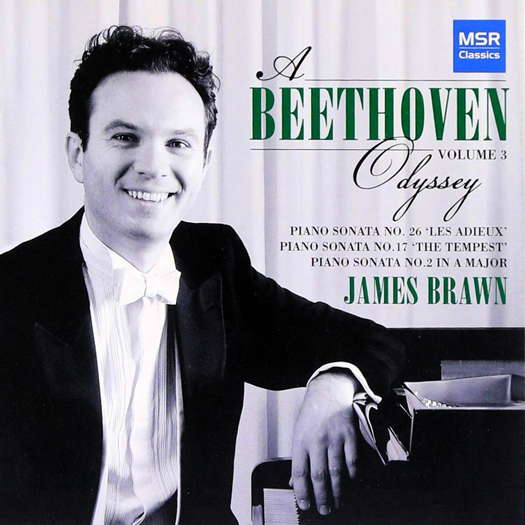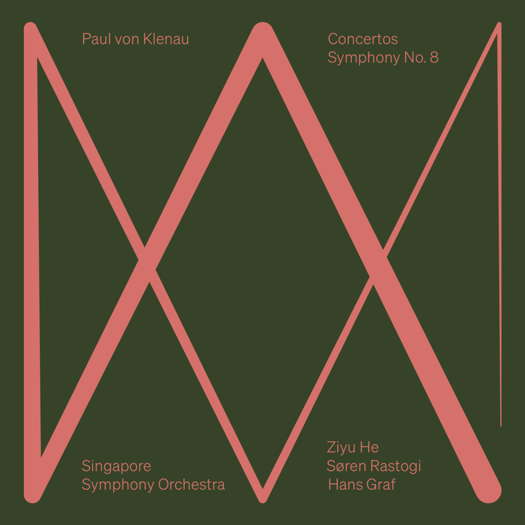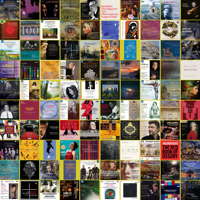 SPONSORED: CD Spotlight. Masterful Handling - Volume 3 of James Brawn's Beethoven, praised by Andrew Schartmann.
SPONSORED: CD Spotlight. Masterful Handling - Volume 3 of James Brawn's Beethoven, praised by Andrew Schartmann.
All sponsored features >>

Freshness and Vitality
GEOFF PEARCE explores the music of Paul von Klenau
'The Singapore Symphony Orchestra responds well to the direction of conductor Hans Graf and produces a warm clear sound. The two soloists are very fine performers ...'
I don't think I've heard any music by Paul von Klenau (1883-1946) before. He was born and died in Denmark but spent most of his working life in Germany and Austria. He was friendly with many of the Nazi figures of the day, but never became a party member and the relationship between them was often described as one of mutual opportunism. His musical influences were quite wide-ranging, including Bruckner, Richard Strauss, French impressionism and also the serial techniques of Arnold Schoenberg, and he was in the inner circle of Alban Berg and his friends. Whilst his musical output was not large, it includes nine symphonies, six operas and a number of other works.
The Violin Concerto which opens this disc is in three movements and dates from 1941. The work is classical in its form and whilst the composer describes it as twelve tone music and even outlines the rows applied, the overall flavour is late Romantic and it is lush, melodic and harmonious.
The first movement, in sonata form, is built up from two contrasting ideas and is quite genial in nature, particularly when one considers the times around which it was written. The soloist Ziyu He possesses a warm sound and impressive technique and I am impressed with the thoughtful way he approaches this work.
Listen — Paul von Klenau: Ruhig fliezend (Violin Concerto)
(8.224744 track 1, 6:49-7:21) ℗ 2023 Dacapo Records :
The second movement is quite serene and reflective, and the orchestra for the most part accompanies a soaring solo part. Again it is performed expressively by the soloist, and I am impressed with the great balance and registration from the orchestra.
Listen — Paul von Klenau: Sehr ruhig (Violin Concerto)
(8.224744 track 2, 4:32-5:13) ℗ 2023 Dacapo Records :
The third movement is lively, dance-like and a complete contrast to the previous movement, requiring considerable agility on the part of the violinist. This is very enjoyable music in anyone's book, and I am surprised that I had not heard this work before.
Listen — Paul von Klenau: Tempo scherzando (Violin Concerto)
(8.224744 track 3, 5:48-6:34) ℗ 2023 Dacapo Records :
The Piano Concerto was written in 1944 and again is formally classical in nature. It also utilises Klenau's version of the serial system which he called 'Key determined twelve tone music' - this is an entirely different beast from that of Schoenberg and his students.
The first movement is lyrical and warm, constructed from contrasting material that can be quite assertive and powerful with calmer moments. The pianist Søren Rastogi is fine and does the writing justice in an inspired performance.
Listen — Paul von Klenau: Allegro (Piano Concerto)
(8.224744 track 4, 5:07-5:52) ℗ 2023 Dacapo Records :
The second movement is calm but, in spite of this, I feel a sense of unease at times, partly because of a climax that does not quite arrive, although there is certainly a build up to one. The orchestral introduction is quite long and when the piano arrives, its part is quite simple. Nevertheless, it is in considerable contrast to the movements around it and there are some powerful moments.
Listen — Paul von Klenau: Andante (Piano Concerto)
(8.224744 track 5, 5:16-6:03) ℗ 2023 Dacapo Records :
The final movement is playful and full of humour and grace. It dispels any gravitas from the two previous movements, and is a well crafted work that receives a very fine performance.
Listen — Paul von Klenau: Lebhaft, und mit Humor (Piano Concerto)
(8.224744 track 6, 5:35-6:23) ℗ 2023 Dacapo Records :
Symphony No 8 (1942) was written in the spirit of an opera that the composer wrote some twenty years earlier with a rococo theme: Die Lästerschule. Perhaps it was not intended for performance, but rather as an exercise or study symphony reflecting past masters, as the composer never sought to publish or have the work performed. It is made of four short movements and the composer gave key signatures.
The first movement is genial and lasts under four minutes. The second movement is full of warmth and grace. On first hearing this, one would wonder what period it was written in and who was the composer - at times it reminds me of Schubert.
Listen — Paul von Klenau: Andante grazioso (Symphony No 8)
(8.224744 track 8, 1:32-2:18) ℗ 2023 Dacapo Records :
The third movement, as was customary in the period the composer was inspired by, is a minuet and trio - short and charming.
The final movement is a lovely playful little rondo and is quite delightful.
Listen — Paul von Klenau: Rondo. Allegro molto vivace (Symphony No 8)
(8.224744 track 10, 0:31-1:23) ℗ 2023 Dacapo Records :
Whatever the reason this work was written, it evidently stands in contrast to the seventh and ninth symphonies - perhaps a little like Beethoven does with his eighth symphony - certainly both are full with good humour.
I am thankful that this disc was released and I have been able to hear it, as otherwise Paul Von Klenau's music would have remained unknown to me. Whilst it is not 'great' music, it is certainly worth hearing.
The Singapore Symphony Orchestra responds well to the direction of conductor Hans Graf and produces a warm clear sound. The two soloists are very fine performers, and this is a disc to certainly enjoy for its freshness and vitality.
Copyright © 19 May 2023
Geoff Pearce,
Sydney, Australia




